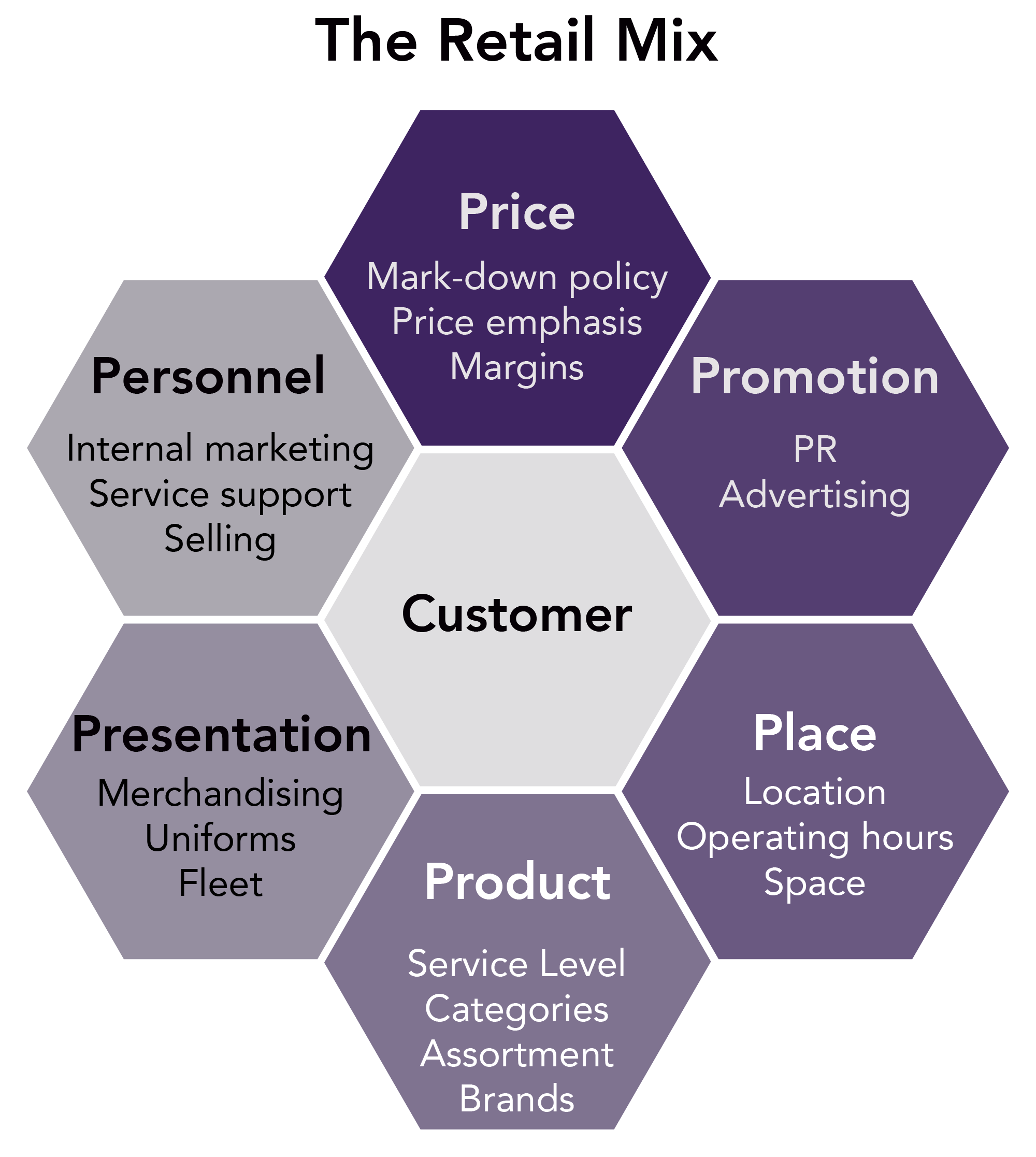A Comprehensive Guide about the 4P of Marketing
The Mintly Team
November 12, 2023
Welcome to our comprehensive guide about the 4P’s of Marketing! When you decide to embark on a marketing journey, it is crucial to have a solid plan that will guide your enterprise towards success. This is where the 4Ps of Marketing comes into play. The 4P of Marketing, also known as the Marketing Mix, is a conceptual framework that comprises four critical elements: Product, Price, Place, and Promotion.
This blog will offer a deep dive into these essential strategies, helping you to navigate the complex world of marketing more effectively. Let’s get started!
Product
A product in marketing terminology refers to the item or service that satisfies the consumers’ needs or wants. But it’s not just about providing a product or service. It involves understanding the requirements of customers and developing goods or services that meet their necessities. Understanding Product is very important phase of 4P of Marketing planning.
Think of Apple, for instance. They don’t just manufacture smartphones; they create iPhones that come with a unique design, user-friendly interface, and innovative features that customers desire.
The concept of ‘Product’ also includes dealing with the product life cycle and continuous innovation to meet changing consumer demands or preferences. It’s essential to ask questions like: What does my customer want? What features should the product have? How will the customer use it? The answers to these questions can help you design your product strategy effectively.
A product can be tangible (physical items like cars or smartphones) or intangible (services like insurance or consulting). Regardless of its form, a product must deliver value to the customer and fulfill a need or want. This value is not just about the functionality of the product, but also includes aspects such as design, brand reputation, user experience, and after-sales service.
When developing a product strategy, companies often consider several factors:
- Product Variety: This refers to the breadth of the product line that a company offers. It can include different types of products or variants of the same product.
- Product Features: These are the characteristics that define a product and differentiate it from competitors. They could be based on functionality, design, performance, or other attributes.
- Product Quality: This refers to how well a product performs its functions. High-quality products often command higher prices and contribute to brand reputation.
- Product Design: Aesthetics play a crucial role in attracting customers. Good design can make a product stand out and influence buying decisions.
- Product Branding: This involves creating a unique name and image for the product that resonates with the target audience.
- Product Packaging: Packaging not only protects the product but also serves as a marketing tool. It can influence buying decisions and shape perceptions about the product.
- Service/Support: This includes after-sales services like customer support, warranty, and repair services which enhance customer satisfaction and loyalty.
By carefully considering these factors in their product strategy, companies can create compelling products that meet customer needs and stand out in competitive markets. The ultimate aim is to create a product that delivers superior value to customers and achieves sustainable business success.
Price
Price signifies the amount that customers pay to purchase the product. The price should be competitive yet sufficient to generate a profit after covering all costs such as production, marketing, and distribution. The pricing strategy varies depending on various factors like competition, product lifecycle stage, target market, and overall business objectives. Price plays a significant role in executing 4P of Marketing when rolling any product.
For example, premium brands like Gucci , Chanel and Rimowa Luggage price their products high to create an image of luxury and exclusivity. Many top 10 designer luggage brands price their products to lift off the image. On the other hand, Walmart adopts an everyday low pricing strategy to attract price-sensitive customers.
Important considerations while deciding the price include: What is the perceived value of the product? Are there any established price points in the market? Can we utilize promotional pricing or bundle pricing? These aspects can aid in creating a viable pricing strategy.
Pricing Strategy
The “4P of Marketing” — product, price, place, and promotion — is a marketing mix model that plays a crucial role in any business’s pricing strategy. The 4Ps work together to ensure a cohesive and effective marketing plan.
In the context of pricing strategy, ‘Price’ is one of the most critical variables. It directly influences how consumers perceive a product and significantly impacts the profitability of an enterprise. Pricing should take into account the costs involved in production, distribution, and marketing, while also considering the perceived value of the product in the eyes of consumers. It’s a balancing act to ensure competitiveness while safeguarding profit margins.
‘Product’ is another vital aspect. The nature of the product, its quality, features, and branding all affect its perceived value, which subsequently influences the pricing. For instance, luxury or innovative products can command higher prices due to their unique value proposition.
‘Place’ refers to the distribution channels used to sell the product. Different places may warrant different pricing strategies. For example, a product sold in a high-end store may be priced higher than the same product sold online or in a discount store.
Lastly, ‘Promotion’ encompasses all communication strategies used to increase product awareness and demand. The type of promotion and the messages conveyed can influence how much consumers are willing to pay for a product. For instance, a compelling advertisement highlighting the unique features or benefits of a product can justify a higher price point.
Place
Place refers to where the customers buy your product or service. This could mean a physical store or an online e-commerce platform. Your goal is to ensure that your products are available in the right place at the right time. How do you find the location or place to promote the product?. This is very important question any marketer will ask in 4P of Marketing phase.
In today’s digital era, ‘Place’ has extended beyond physical locations and entered the realm of e-commerce. Choosing the right distribution channels and ensuring efficient logistics are fundamental elements of this ‘P’. Key questions here include: Where do our target customers shop? How can we make the product more accessible?
Applying Place Strategy of Marketing
The ‘Place’ in the 4P’s marketing framework refers to the location where a product or service is provided or the distribution channels used to deliver it. The place strategy focuses on managing and establishing points of distribution for the product while ensuring it is easy for customers to access.
For instance, a company selling organic food products might consider selling in local farmer markets, health food stores, or creating an online presence for e-commerce. The place strategy here would involve identifying the most effective and efficient channels that align with their target customer’s shopping habits.
Moreover, ‘place’ isn’t limited to physical locations. In today’s digital era, the concept of ‘place’ has extended to include online marketplaces. For businesses operating in the e-commerce domain, their place strategy would involve optimizing their website for easy navigation, ensuring reliable delivery methods, and focusing on digital marketing to drive traffic to their online store.
The place strategy can significantly impact the visibility and accessibility of a product or service. It’s about making sure that customers know where to find a product and can purchase it with minimum friction. Therefore, businesses need to ensure they have a comprehensive place strategy as part of their overall marketing mix.
Promotion
Promotion encompasses all activities used to communicate with customers about the product. It involves advertising, public relations, sales promotions, social media marketing, email marketing for Industries like mining companies, and more.
Nike’s “Just Do It” campaign is a prime example of effective promotion. They not only promote their athletic gear but also a lifestyle of fitness and motivation.
Promotion strategies should be designed considering factors like: Which promotional channels best fit our product? When is the right time to promote? What message do we want to send to our customers?
Promotion Strategy of Marketing
Promotion strategy is a crucial component of the 4P of Marketing – Product, Price, Place, and Promotion. It is a key element in informing, persuading, and reminding potential customers about a product or service. The 4P’s collectively combine to create an effective marketing strategy, with promotion serving as the conduit that connects the business to its target audience.
The first P – Product, refers to the item or service offered by the company. It could be tangible goods or intangible services that fulfill a customer’s need or want. In terms of promotion strategy, it’s essential to understand the product thoroughly in order to highlight its unique selling points and benefits to the consumers.
The second P – Price, refers to how much the customer is expected to pay for the product. Pricing strategy plays a significant role in marketing as it directly affects the perceived value of the product. A sound promotion strategy can help justify the price to customers by emphasizing the quality, features, or other benefits of the product.
The third P – Place, refers to where and how the product will be sold. This could be a physical location like a retail store or an online platform. A successful promotion strategy involves considering the place where customers usually shop and delivering promotional messages in those locations for maximum visibility.
The fourth P – Promotion, is all about communicating with potential customers. It involves advertising, public relations, sales promotions, and direct marketing to spread awareness about the product. The goal is to attract and persuade customers, providing them with compelling reasons to choose your product over competitors.
Final thoughts
In conclusion, understanding and implementing the 4P of Marketing – Product, Price, Place, and Promotion – is key to successful marketing. By strategizing these elements to meet your customer’s needs better, you can gain a competitive edge in the marketplace. Remember, the 4Ps are not standalone entities but work together to create a marketing mix that resonates with your target audience.
All Tags
